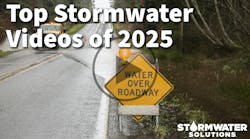Ka-Ching!
Most models of and approaches toward cost accounting of storm water control measures (SCMs) use standardized engineering economics. These models use the first cost and annualized O&M costs to present value using assumed interest rates, etc. Models that are more sophisticated will break down the first costs to show engineering design, project administration, land and construction costs. O&M costs can be segmented into minor and major operations. In some models, costs are estimated from a statistical database of costs from other projects. For example, the cost of pond maintenance is estimated based on data from 10 case histories, which are normalized to the area of the pond. Others are based on unit costs of labor, equipment, disposal, administration, etc. Each method has its advantages and drawbacks; however, my guess is that both methods lack the precision that people are looking for, and, in some cases, are underestimating or overestimating costs.
Opportunity Costs & Risk Accounting
Other economic factors can significantly affect the life-cycle costs of an SCM. These factors include opportunity costs and risk accounting. An opportunity cost relates to alternative land uses, local design codes and land availability. Alternative land uses can be extra parking spaces in limited parking areas. For example, a car dealer in Washington state once told me that a single space “turns” $3,000 dollars per week in revenue. At a 30% margin, that is $900 per week or about $45,000 per year. Ten spaces could approach half a million dollars per year of lost revenue. Therefore, from the owner/developer’s perspective, the economic equation goes far beyond simple installation and O&M costs. In another case, the loss of parking reduces the footprint of the building due to code restrictions. This impacts the long-term earnings for commercial and retail space, which again add up to substantial sums of capital that can trivialize the first and O&M costs. Lastly, for land costs, sometimes there is no land available. Many retail and commercial enterprises, such as restaurants, have minimum land space needs, and the need to take up extra space by some SCMs negates the practicality of developing the land in the first place.
Factoring in Maintenance
With respect to O&M, we do not consider the increased risk associated with longer-term maintenance intervals. For example, assume there are two SCMs, one that requires annual maintenance and another that is maintained once every five years. For the sake of illustration, assume both have the same annualized costs. There is a chance that some unexpected event, such as an illicit discharge or an erosive, high-intensity storm, may happen, requiring unexpected maintenance. Because the first SCM is maintained every year, this risk is covered in the costs, whereas the other would be subjected to more frequent maintenance requirements, such that the overall risk-based cost is higher than one would estimate without risk-based accounting.
Until SCMs are being maintained as they should be (and the sooner, the better), I believe we need to collect better numbers and use more sophisticated approaches to fully understand their true costs and economic impacts.
Download: Here

